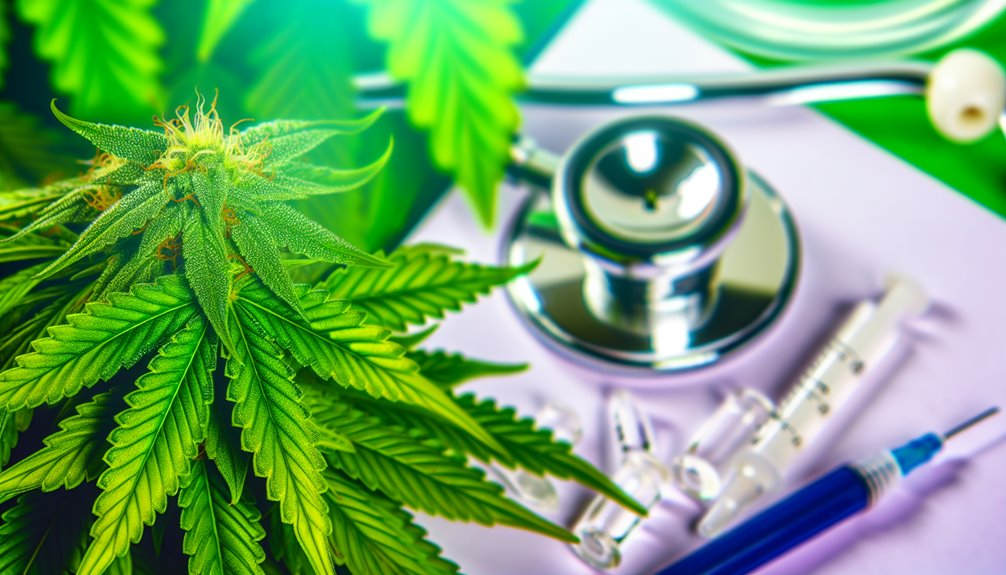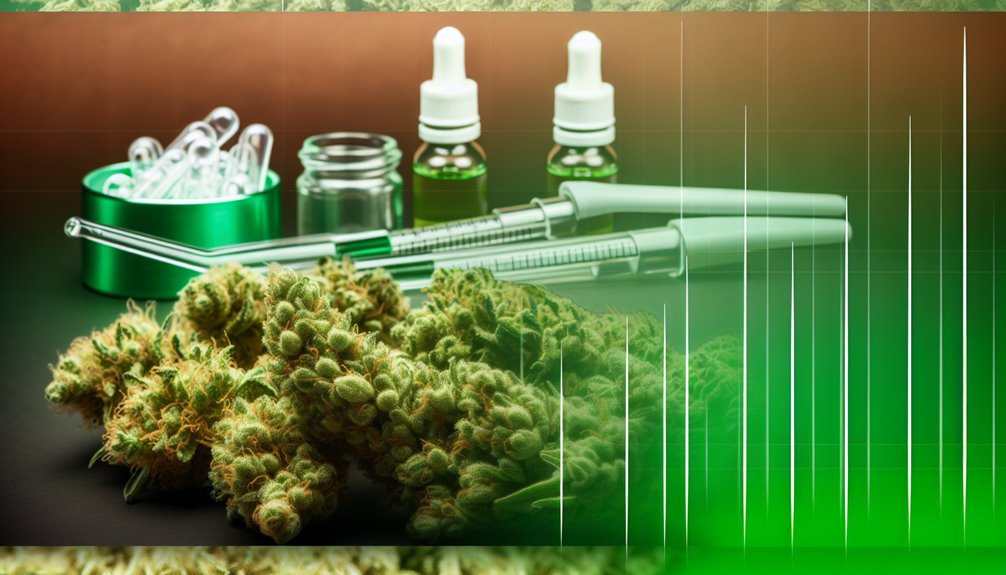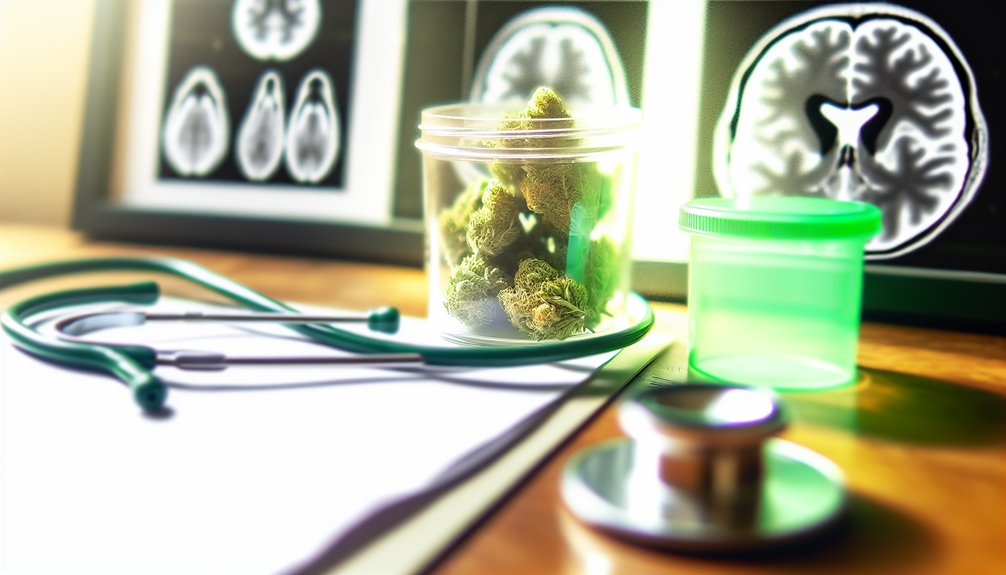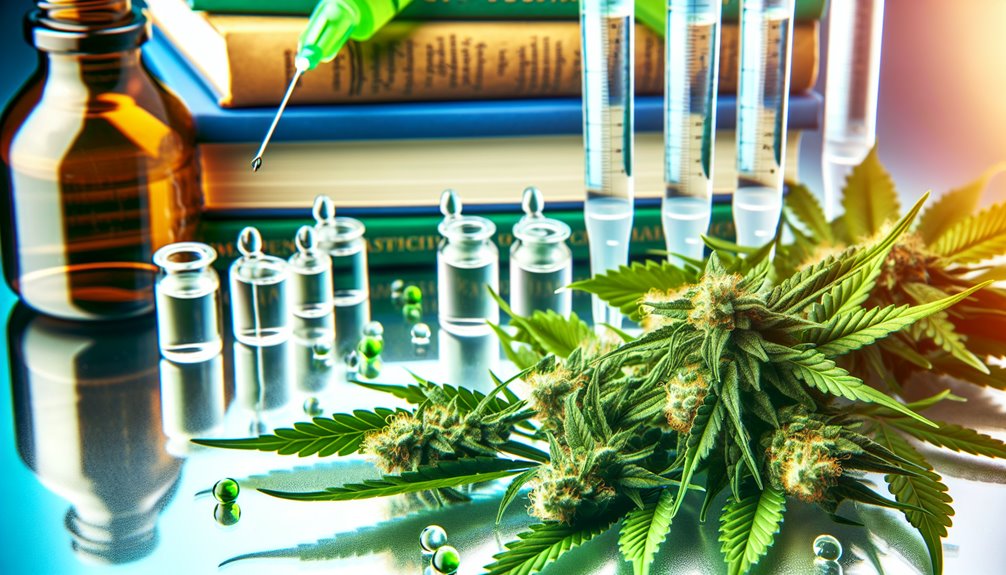Did you know that medical cannabis has been used for centuries to treat a variety of ailments? Today, it's a viable option for managing conditions like chronic pain, nausea, anxiety, and neurological disorders. The secret lies in its active compounds, THC and CBD, which interact with our body's endocannabinoid system in fascinating ways. But how exactly does it work? And what's the best way to use it? Exploring the world of medical cannabis can be complex, but it's essential to understand all the intricacies to get the most out of its potential benefits. Stay with me; there's a lot more to unravel.
The Historical Context of Medical Cannabis

While it may seem like a modern phenomenon, the use of cannabis for medicinal purposes has a long and varied history. The ancient applications were prevalent with physicians using it to treat pain, stomach cramps, and muscle spasms. This therapeutic evolution was initiated by an Irish physician, William Brooke O'Shaughnessy, in the 1830s, marking its introduction to Western medicine. By the mid-19th century, over 2,000 cannabis medicines were produced by more than 280 manufacturers, showcasing its widespread acceptance. Even Queen Victoria found it useful for menstrual pain. However, the early 20th century marked a decline due to prejudices and regulatory restrictions. It was only in the late 20th century that a reemergence began, leading to today's growing acceptance and ongoing research. In 1937, the federal government enacted the Marihuana Tax Act, which effectively prohibited cannabis but allowed for medical use, albeit through heavily regulated means.
Understanding the Legal Status of Medical Cannabis Globally
As you explore the global landscape of medical cannabis, you'll notice a patchwork of regulations and laws. Global regulations are dictated by international treaties, yet state policies vary widely.
- Argentina, Australia, Canada, Chile, and Colombia are among countries that have legalized medical cannabis, with different approaches to production and distribution.
- The UN and World Health Organization regulate cannabis globally, recognizing its medical value but maintaining strict control.
- In the U.S., legality varies by state, with Mexico limiting THC content, and Germany and Greece implementing legalized medical programs.
- Countries such as Canada, the Netherlands, Thailand, and Uruguay have more relaxed policies, while others limit access to specific cannabinoid drugs.
Additionally, despite the progress in several states, federal prohibition remains a significant challenge in the U.S., causing a discrepancy between state and federal laws. Understanding these complexities is essential for anyone looking to serve in this field.
The Science Behind Medical Cannabis: An Overview

Delving into the science behind medical cannabis, you'll discover a complex network of molecules, systems, and chemical reactions. The plant produces an array of phytocannabinoids, such as THC, CBD, and CBG. These compounds interact with your body's endocannabinoid system (ECS), activating pathways that can alleviate various conditions.
The phytocannabinoid interactions aren't limited to the ECS alone; they also bind with other receptors, influencing multiple physiological processes. Excitingly, a therapeutic synergy between phytocannabinoids and terpenes has been observed, enhancing cannabis's curative effects.
Understanding this intricate interplay, you'll appreciate the potential of combining cannabis components with pharmaceutical drugs to amplify therapeutic outcomes. But remember, every patient response varies, demanding personalized dosing strategies. As you explore this scientific panorama, you're better equipped to serve those relying on medicinal cannabis.
Potential Health Benefits of Medical Cannabis
Given the intricate science of medical cannabis, you might wonder about its practical applications. Here are a few potential health benefits that may pique your interest:
- Pain Management: Medical cannabis can be a part of pain relief strategies. Users report significant improvements in chronic pain, reducing the need for other prescription medications.
- Mental Health and Anxiety: As part of anxiety management techniques, medical cannabis can help reduce symptoms and improve mental health-related quality of life.
- Sleep and Other Symptoms: From improving sleep quality to treating symptoms like nausea and muscle spasms, medical cannabis offers a variety of benefits.
- Healthcare Resource Utilization: Users tend to require fewer emergency room visits and hospital admissions, indicating a potential reduction in healthcare resource utilization.
Medical Cannabis: Applications and Dosage

Traversing the world of medical cannabis, you'll find a range of applications for various health conditions. From severe and chronic pain to multiple sclerosis, and from nausea during cancer treatment to epilepsy, medical cannabis can serve as a potential treatment. Your route of administration may vary, with options like smoking, edibles, and oils.
However, patient education is essential, and usage should always be under medical supervision. Regular check-ins with healthcare professionals guarantee you're properly evaluated for subjective and objective outcomes. Dosage management is also important, starting with a low dose and gradually titrating up until a therapeutic level is reached. Don't overlook the legal aspects; while medical cannabis is legal in many states, federal laws still apply.
Role of Medical Cannabis in Managing Chronic Pain
When considering the role of medical cannabis in managing chronic pain, it is crucial to analyze both clinical research and patient experiences. A meta-analysis of randomized controlled trials (RCTs) shows that medical cannabis is more likely than a placebo to reduce pain scores. Furthermore, specific cannabinoids like Nabiximols have been strongly associated with pain reduction.
- Patient testimonials often highlight improved sleep and mental health as key benefits of using medical cannabis for chronic pain.
- Dosing challenges persist due to lack of formal training among physicians and varied patient responses.
- Studies suggest that cannabis may lead to a significant reduction in opioid use, a revelation that could reshape pain management strategies.
- However, the high cost and lack of insurance coverage for medical cannabis are significant barriers for many patients.
Ultimately, the evidence supports the potential of medical cannabis in pain management, but further research is necessary.
Using Medical Cannabis for Epilepsy: A Closer Look

In exploring the use of medical cannabis for epilepsy, it's vital to highlight the notable reduction in seizure frequency reported in several studies. This efficacy is especially remarkable in cases of intractable epilepsies and conditions like Dravet and Lennox-Gastaut syndrome. The key player, Cannabidiol (CBD), works by blocking nerve-amplifying signals and has a synergistic effect with certain antiepileptic drugs. However, it's not a silver bullet; treatment guidelines recommend medical cannabis as an adjunctive treatment, not as a sole therapy. It's also important to examine potential drug interactions and maintain stable tissue levels with twice-daily dosing. While managing seizures, remember that safety precautions are paramount, especially around THC-predominant strains. With careful use, you can help improve patients' quality of life notably.
Controversies and Debates Surrounding Medical Cannabis
While medical cannabis has shown potential in managing conditions like epilepsy, it's not without controversy and debate. You must consider:
- The ethical implications of recommending a substance with such a complex legal status
- The impact of public perception, often skewed by media and historical biases
- The scientific debates surrounding efficacy and safety
- The professional challenges faced by healthcare providers
These issues intertwine, complicating the landscape of medical cannabis use. It's a balancing act – weighing the potential benefits against the risks, traversing legal inconsistencies, and addressing societal concerns. The dialogue is complex and evolving, and as someone serving others, it's crucial to stay informed, critically evaluate the evidence, and engage in thoughtful, informed discussions on medical cannabis.
Future Perspectives on Medical Cannabis Research and Usage

As the horizon of medical cannabis continues to broaden, exciting new research and applications are emerging. Future innovations are focusing on expanding therapeutic uses, including treatment for autoimmune disorders and neurological conditions. Scientists are harnessing the potential of lesser-known cannabinoids like CBG and CBN, and exploring the entourage effect for therapeutic advancements.
Cultivation and production are also undergoing a revolution. Techniques such as Controlled Environment Agriculture and genetic engineering are being used for consistent quality and potency. Sustainability is gaining traction in these practices.
Lastly, personalized medicine is coming to the fore, with treatments tailored to an individual's genetics. Innovative delivery systems are being developed for better patient compliance. Your role in this evolving landscape is essential, fostering these advancements to better serve those in need.
Conclusion
Isn't it fascinating how medical cannabis, a plant used for centuries, is redefining modern medicine? Its potential in managing chronic pain and neurological disorders like epilepsy is substantial. However, it's crucial to proceed with caution – medical cannabis requires careful patient education and supervision. With ongoing research, who knows what other health benefits we might uncover? The future of medical cannabis holds promise, but only time and rigorous scientific exploration will determine its full potential.
If you're curious to learn more about how medical cannabis can help you or a loved one, I invite you to visit Fells Point Cannabis Docs of Maryland. They have a knowledgeable team ready to answer your questions and guide you through the process. You can also give them a call at (410) 401-4200. Let's explore the possibilities together!
